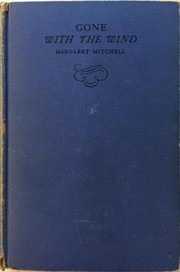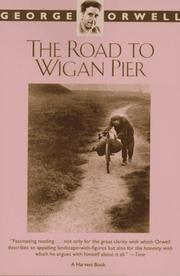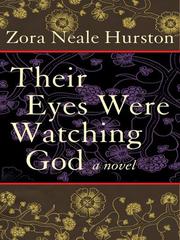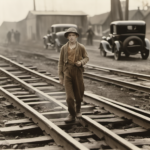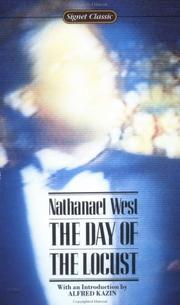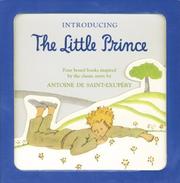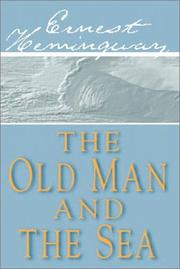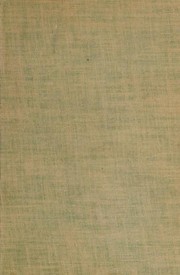Are you fascinated by the tumultuous and transformative era of the 1930s? Delve into the heart of this captivating decade with our curated list of the 20 best books about the 1930s. From gripping historical accounts to compelling fiction set against the backdrop of the Great Depression, these books offer a vivid and immersive experience of the social, political, and cultural landscape of the time. Whether you’re a history buff, a literature enthusiast, or simply curious about this pivotal period, there’s a book on the 1930s waiting to transport you back in time. Discover the most compelling the 1930s books that deserve a place on your reading list!
Contents
- 1 20 Best The 1930S Books
- 2 The Grapes of Wrath
- 3 To Kill a Mockingbird
- 4 The Great Gatsby
- 5 Brave New World
- 6 Gone with the Wind
- 7 Animal Farm
- 8 Of Mice and Men
- 9 The Road to Wigan Pier
- 10 Their Eyes Were Watching God
- 11 Native Son
- 12 The Big Sleep
- 13 The Hobbit
- 14 The Thin Man
- 15 The Day of the Locust
- 16 The Maltese Falcon
- 17 The Little Prince
- 18 The Old Man and the Sea
- 19 The Glass Key
- 20 The Sound and the Fury
- 21 Tropic of Cancer
- 22 Final Thoughts on Best The 1930S Books
- 23
20 Best The 1930S Books
The Grapes of Wrath
by John Steinbeck
The Grapes of Wrath, a book about the 1930s, written by John Steinbeck, is a powerful and moving portrayal of the struggles of the Joad family during the Great Depression. The story follows the Joads as they are forced to leave their home in Oklahoma and travel to California in search of a better life. The novel vividly captures the hardships and injustices faced by migrant workers during the 1930s, as well as the resilience and strength of the human spirit in the face of adversity. Steinbeck’s evocative prose and deep understanding of the human condition make this a timeless classic that continues to resonate with readers today. The Grapes of Wrath is a poignant and thought-provoking exploration of the social and economic challenges of the 1930s, and a testament to the enduring power of the human will.
To Kill a Mockingbird
by Harper Lee
To Kill a Mockingbird, a timeless classic by Harper Lee, is a captivating book set in the 1930s. It follows the story of Scout Finch, a young girl growing up in the small town of Maycomb, Alabama. The book about the 1930s explores themes of racism, prejudice, and morality through the eyes of Scout as her father, Atticus Finch, defends a black man accused of raping a white woman.
The 1930s book is a poignant coming-of-age tale that not only exposes the harsh realities of the Deep South but also demonstrates the power of empathy and understanding. Lee’s masterful storytelling and richly drawn characters make this novel a must-read for anyone interested in American history and social justice. Through Scout’s innocent yet perceptive narration, readers are transported to a time and place where the moral compass of an entire community is tested. To Kill a Mockingbird is a thought-provoking and profoundly moving book on the 1930s that continues to resonate with readers of all ages.
The Great Gatsby
by F. Scott Fitzgerald
The Great Gatsby, written by F. Scott Fitzgerald, is a classic novel set in the roaring ’20s, a time of lavish parties, societal excess, and the pursuit of the American Dream. The story follows the enigmatic Jay Gatsby, a wealthy and mysterious man who throws extravagant parties at his opulent mansion on Long Island. Narrated by Nick Carraway, a young man from the Midwest who becomes Gatsby’s neighbor, the novel delves into themes of love, wealth, and the emptiness of the Jazz Age.
Through vivid prose and compelling characters, Fitzgerald paints a mesmerizing portrait of a bygone era, exploring the disillusionment and moral decay that lurked beneath the surface of the glittering ’20s. The Great Gatsby is a timeless tale that continues to resonate with readers today, offering a poignant commentary on the pursuit of wealth and the elusive nature of the American Dream. This is a must-read for anyone interested in a captivating book on the 1930s that captures the essence of the era.
Brave New World
by Aldous Huxley
Brave New World by Aldous Huxley is a thought-provoking book about the 1930s that presents a dystopian society where technology and conditioning have created a superficially perfect world. Set in a future where people are genetically engineered and conditioned to fit into specific social classes, the novel explores themes of conformity, individuality, and the consequences of technological advancement. The story follows the experiences of Bernard Marx, an outsider in this highly controlled society, and his interactions with the rebellious and free-spirited John, who challenges the norms of the ’30s society.
Huxley’s novel offers a chilling critique of the potential dangers of a society driven by consumerism, instant gratification, and the suppression of individuality. The book’s exploration of the human condition and the manipulation of human nature makes it a timeless and thought-provoking read, with themes that remain relevant today.
Gone with the Wind
by Margaret Mitchell
Gone with the Wind by Margaret Mitchell is a timeless classic set in the tumultuous backdrop of the 1930s. This epic novel follows the life of Scarlett O’Hara, a headstrong Southern belle, as she navigates love, loss, and the social upheaval of the Civil War and its aftermath. The story unfolds against the backdrop of the American South, portraying the complexities of human relationships and the resilience of the human spirit. Mitchell’s vivid storytelling brings to life the grandeur of the plantation era and the harsh realities of war and reconstruction. The novel delves into themes of love, betrayal, and survival, making it a compelling and unforgettable read. With its rich historical detail and unforgettable characters, Gone with the Wind is a must-read for anyone interested in immersing themselves in a captivating ‘book on the 1930s’.
Animal Farm
by George Orwell
Animal Farm, penned by George Orwell, is a thought-provoking allegory that takes place on a farm and is a powerful commentary on the political climate of the 1930s. The story follows a group of farm animals who overthrow their human owner and establish their own self-governing society, with the promise of equality and prosperity for all. However, as time goes on, the pigs, who initially led the revolution, begin to adopt the same oppressive and corrupt behaviors as the humans they replaced. The book serves as a poignant critique of the totalitarian regimes and political disillusionment of the 1930s, highlighting the dangers of power and the potential for corruption.
Of Mice and Men
by John Steinbeck
Of Mice and Men is a poignant book on the 1930s by John Steinbeck that delves into the lives of itinerant ranch workers during the Great Depression. The story follows two drifters, George and Lennie, as they navigate the harsh realities of the 1930s and pursue their dream of owning a piece of land. Set against the backdrop of economic hardship and social upheaval, the novel explores themes of loneliness, friendship, and the pursuit of the American Dream.
Steinbeck’s evocative prose brings the struggles of the characters to life, painting a vivid picture of the 1930s and the challenges faced by those living through the era. The book’s exploration of human resilience and the impact of societal forces makes it a timeless and thought-provoking read, offering insight into the human condition and the complexities of relationships in a time of hardship.
The Road to Wigan Pier
by George Orwell
The Road to Wigan Pier by George Orwell is a compelling book about the 1930s that provides a vivid and gritty portrayal of the working-class living conditions in Northern England. Orwell’s immersive writing style takes readers on a journey through the coal mining towns and industrial landscapes of the era, offering a raw and unflinching look at the hardships faced by the working poor. Through firsthand experiences and in-depth research, Orwell delves into the struggles of poverty, unemployment, and social inequality that plagued the 1930s.
Published in 1937, The Road to Wigan Pier remains a powerful and relevant exploration of class division and economic disparity. Orwell’s keen observations and poignant storytelling shed light on the human toll of industrialization and the stark realities of working-class life during the 1930s. This influential book on the 1930s offers a poignant reflection on a pivotal period in history, making it a must-read for those interested in understanding the social and economic dynamics of the time.
Their Eyes Were Watching God
by Zora Neale Hurston
Their Eyes Were Watching God by Zora Neale Hurston is a captivating book about the 1930s that delves into the life of Janie Crawford, a black woman in the American South. The novel follows Janie’s journey through three marriages as she searches for love, independence, and her own identity. Set against the backdrop of the 1930s, the book vividly portrays the struggles and triumphs of African American women during this era.
Zora Neale Hurston’s writing is rich with Southern dialect and folklore, immersing readers in the culture and traditions of the time. Through Janie’s experiences, the novel explores themes of race, gender, and societal expectations, shedding light on the complexities of life in the 1930s. Their Eyes Were Watching God is a timeless classic that continues to resonate with readers today, offering a powerful and poignant glimpse into the lives of women in the 1930s.
Native Son
by Richard Wright
Native Son, a powerful book about the 1930s, is a groundbreaking novel by Richard Wright that delves into the harrowing realities of racial oppression and poverty in America. The story follows Bigger Thomas, a young African American man living in poverty on the South Side of Chicago during the 1930s, as he navigates the challenges of systemic racism and social injustice.
Wright’s gripping narrative sheds light on the experiences of black Americans in the tumultuous 1930s, offering a raw and unflinching portrayal of the struggles they faced. The book explores themes of fear, anger, and the desperate longing for a better life, as Bigger grapples with the constraints placed upon him by society.
Native Son is a seminal work that captures the social and political climate of the 1930s with unflinching honesty, making it a timeless and essential read for anyone seeking to understand the complexities of that era.
The Big Sleep
by Raymond Chandler
The Big Sleep is a classic hardboiled detective novel set in the gritty, 1930s-era Los Angeles. Written by Raymond Chandler, it follows the tough and cynical private detective Philip Marlowe as he delves into the seedy underbelly of the city to solve a complex case involving blackmail, murder, and corruption. The novel is renowned for its sharp dialogue, intricate plot, and vivid portrayal of the 1930s setting. Chandler’s evocative prose brings the era to life, capturing the atmosphere of a time filled with gangsters, speakeasies, and femme fatales.
With its gripping storytelling and memorable characters, The Big Sleep is a must-read for anyone interested in a book on the 1930s. It’s a thrilling and atmospheric book about the 1930s that has stood the test of time, influencing countless other works in the noir genre. If you’re looking for a gripping mystery set in the 1930s, look no further than The Big Sleep.
The Hobbit
by J.R.R. Tolkien
The Hobbit, written by J.R.R. Tolkien, is a classic adventure novel that takes readers on a journey through the fantastical world of Middle-earth. This beloved book about the 1930s follows the story of Bilbo Baggins, a hobbit who is swept away from his comfortable life into a quest to help a group of dwarves reclaim their homeland from the fearsome dragon, Smaug.
As Bilbo and his companions encounter trolls, goblins, and other mythical creatures, they must rely on their wit and courage to survive the perils of their journey. With its rich world-building and unforgettable characters, The Hobbit is a timeless tale of heroism, friendship, and the power of unexpected bravery.
Tolkien’s enchanting storytelling and intricate mythology have captivated readers for generations, making The Hobbit a must-read for fans of epic fantasy and the 1930s book alike. Whether you’re discovering it for the first time or revisiting it as a longtime fan, this timeless classic continues to inspire readers of all ages.
The Thin Man
by Dashiell Hammett
The Thin Man by Dashiell Hammett is a classic detective novel set in the 1930s, a period known for its glamorous yet gritty atmosphere. This gripping story follows the witty and charming ex-detective Nick Charles as he becomes embroiled in a murder mystery that takes him deep into the seedy underbelly of prohibition-era New York City. Alongside his sharp and equally quick-witted wife Nora, Nick navigates the world of high society, jazz clubs, and dangerous criminals in a thrilling and suspenseful tale that captures the essence of the 1930s with its smoky speakeasies and elegant flapper fashion.
The Day of the Locust
by Nathanael West
The Day of the Locust, written by Nathanael West, is a compelling book about the 1930s. Set in Depression-era Hollywood, the novel follows a cast of characters who are all struggling to find their place in the chaotic and unforgiving world of the entertainment industry. The story centers around Tod Hackett, a talented artist working in the movie industry, and his interactions with a colorful array of individuals, including aspiring starlets, desperate actors, and disillusioned immigrants.
West’s vivid and evocative writing brings to life the 1930s in all its grit and glamour, painting a bleak yet captivating portrait of a society on the brink of collapse. The characters’ dreams and desires collide with the harsh realities of their surroundings, leading to a climax that is as shocking as it is inevitable.
The Day of the Locust is a haunting and thought-provoking exploration of the dark underbelly of Hollywood during the 1930s, and a timeless commentary on the pursuit of fame and fortune in an unforgiving world.
The Maltese Falcon
by Dashiell Hammett
The Maltese Falcon, written by Dashiell Hammett, is a classic ‘book about the 1930s’ that follows the story of private detective Sam Spade as he gets entangled in a web of deceit, betrayal, and murder. Set in the midst of the ‘1930s book’ era, the novel takes readers on a thrilling journey through the seedy underbelly of San Francisco, where Spade navigates through a cast of colorful characters in search of a valuable statuette, the eponymous Maltese Falcon.
Hammett’s hard-boiled writing style and sharp dialogue bring the ‘the 1930s book’ setting to life, painting a vivid picture of a time when gangsters and corruption ruled the streets. The story is full of twists and turns, keeping readers on the edge of their seats until the very end. The Maltese Falcon is a gripping ‘book on the 1930s’ that has stood the test of time, captivating audiences with its timeless tale of crime and intrigue.
The Little Prince
by Antoine de Saint-Exupéry
The Little Prince is a timeless classic written by Antoine de Saint-Exupéry, a French writer and aviator. First published in 1943, this enchanting novella has captured the hearts of readers for decades. Set in the 1930s, this book takes us on a whimsical journey through the eyes of a young prince who travels from planet to planet, meeting a variety of quirky characters along the way. Through these encounters, the little prince learns valuable life lessons and philosophical insights, making this book a profound and thought-provoking read.
With its beautiful illustrations and poetic prose, The Little Prince is a book about the 1930s that transcends time and age, appealing to both children and adults. It delves into themes of love, friendship, and the complexities of human nature, offering a captivating and poignant exploration of the human experience. This beloved classic continues to resonate with readers worldwide, reminding us of the importance of innocence, wonder, and the pursuit of what truly matters in life.
The Old Man and the Sea
by Ernest Hemingway
The Old Man and the Sea, written by Ernest Hemingway, is a timeless classic that takes readers on a captivating journey into the world of deep-sea fishing in the 1930s. The novella follows the story of an aging Cuban fisherman, Santiago, who sets out on a heroic and arduous solo journey to catch a giant marlin. As he battles the elements and his own inner demons, Santiago’s unwavering determination and resilience are put to the ultimate test. Hemingway’s masterful storytelling and vivid descriptions transport readers to the sun-drenched waters of the Gulf Stream, where every line and every wave are palpable.
The Old Man and the Sea is a poignant and powerful exploration of the human spirit, the struggle for survival, and the indomitable will of the human heart. Hemingway’s prose is spare and evocative, capturing the essence of the 1930s and the timeless struggle between man and nature. This Pulitzer Prize-winning novella is a must-read for anyone who appreciates a beautifully crafted, thought-provoking story about the indomitable human spirit.
The Glass Key
by Dashiell Hammett
The Glass Key by Dashiell Hammett is a gripping book on the 1930s that delves into the world of political corruption, crime, and power struggles. Set in a city filled with gangsters and politicians, the story follows Ned Beaumont, a loyal right-hand man to the political boss Paul Madvig. When Madvig becomes a suspect in a murder case, Beaumont sets out to clear his boss’s name and unravel the truth behind the crime.
Hammett’s masterful storytelling and vivid descriptions bring the 1930s to life, capturing the essence of the era with its dark alleys, smoky bars, and characters with hidden agendas. The novel is a thrilling blend of mystery, suspense, and noir, as Beaumont navigates the treacherous landscape of deceit and betrayal in his quest for justice.
The Glass Key is a must-read for anyone interested in a captivating book about the 1930s that explores the gritty and complex world of crime and politics during that tumultuous time period.
The Sound and the Fury
by William Faulkner
The Sound and the Fury, a classic work of American literature, is a powerful and complex book about the 1930s written by William Faulkner. Set in the fictional Yoknapatawpha County, Mississippi, the novel tells the story of the Compson family’s decline during the 1930s. Divided into four sections, each narrated by a different character, the novel explores themes of memory, time, and the disintegration of the Southern aristocracy.
Faulkner’s innovative use of stream-of-consciousness narrative and non-linear storytelling makes The Sound and the Fury a challenging yet rewarding read. Through the voices of the Compson siblings – Benjy, Quentin, Jason, and their black servant Dilsey – the novel paints a vivid portrait of a family grappling with loss, betrayal, and the changing social and economic landscape of the 1930s.
With its rich prose and complex characters, The Sound and the Fury remains a timeless exploration of the human condition and a compelling portrayal of life in the American South during the 1930s.
Tropic of Cancer
by Henry Miller
Tropic of Cancer by Henry Miller is a groundbreaking book about the 1930s that pushes the boundaries of literature. Set in Paris, the novel follows the life of struggling writer Henry Miller as he navigates through the bohemian lifestyle of the city. With its raw and unapologetic portrayal of sex, poverty, and artistic struggle, Tropic of Cancer was initially banned in the United States for its explicit content.
Miller’s vivid and unfiltered prose captures the essence of the 1930s with unparalleled honesty, providing a raw and unapologetic glimpse into the lives of expatriates and artists living on the edge. The novel’s exploration of existential themes, combined with its gritty portrayal of life in Paris, makes it a quintessential read for anyone interested in the cultural and literary landscape of the 1930s.
Overall, Tropic of Cancer is a provocative and unflinching book on the 1930s that challenges traditional literary conventions and offers a unique perspective on life during this tumultuous era.
Final Thoughts on Best The 1930S Books
In conclusion, The 1930S were a pivotal decade in history, and these 20 best books about the 1930s offer a deep dive into the events, culture, and struggles of the time. Whether you’re interested in the Great Depression, the rise of fascism, or the golden age of Hollywood, these books provide a comprehensive look at this transformative period. From fiction to non-fiction, there’s something for every reader to explore and gain a better understanding of the 1930s. So, pick up one of these books and immerse yourself in the captivating world of the 1930s.
Which book about The 1930S is best?
The best book on The 1930S can vary with personal preference, but three widely recommended titles are:
- The Grapes of Wrath by John Steinbeck,
- To Kill a Mockingbird by Harper Lee,
- The Great Gatsby by F. Scott Fitzgerald.
Each offers valuable insights and could be a great starting point.
What are the best books to learn about The 1930S?
For those looking to learn about The 1930S, there is a wealth of literature that can provide a comprehensive understanding of the subject. Some of the most highly recommended books include:
- The Grapes of Wrath by John Steinbeck,
- To Kill a Mockingbird by Harper Lee,
- The Great Gatsby by F. Scott Fitzgerald,
- Brave New World by Aldous Huxley,
- Gone with the Wind by Margaret Mitchell,
- Animal Farm by George Orwell,
- Of Mice and Men by John Steinbeck,
- The Road to Wigan Pier by George Orwell,
- Their Eyes Were Watching God by Zora Neale Hurston,
- Native Son by Richard Wright
These books offer a range of perspectives on The 1930S, covering various aspects and approaches to the subject.
What are the best books about The 1930S?
The best books about The 1930S are:
- The Grapes of Wrath by John Steinbeck,
- To Kill a Mockingbird by Harper Lee,
- The Big Sleep by Raymond Chandler,
- The Hobbit by J.R.R. Tolkien,
- The Road to Wigan Pier by George Orwell,
- Animal Farm by George Orwell.
Each offers unique insights into the subject. While these books about The 1930S are highly regarded, it’s important to note that any list of ‘best’ books is subjective and reflects a range of opinions.
What are the best The 1930S books of all time?
Choosing the best The 1930S books of all time can vary depending on who you ask, but five titles that are often celebrated include
- The Grapes of Wrath by John Steinbeck,
- To Kill a Mockingbird by Harper Lee,
- Gone with the Wind by Margaret Mitchell,
- The Road to Wigan Pier by George Orwell,
- and The Big Sleep by Raymond Chandler.
Each of these books has made a significant impact in the field of The 1930S and continues to be influential today.





